


















God of Carnage begins with two couples meeting to discuss an incident that has occurred between their eleven-yearold sons. Alan and Annette’s son, Benjamin, hit Veronica and Michael’s son, Henry, in the face with a stick after a disagreement; as a result, Henry has missing teeth and visible injuries. The parents are meeting to talk about the incident and supposedly mend fences.
The two couples start off cordial, but quickly become contentious as their differing priorities, personalities, and values come to light. The play confronts not only issues of parenting, but also sexism, racism, homophobia, work/life balance, and what are the limits of civility and pretense in modern society.

God of Carnage was first written in French by playwright Yasmina Reza and had a German-language premiere in Zurich in 2006, then was translated by Christopher Hampton, with an English-language premiere in London in 2008. The London production won an Olivier Award for Best New Comedy. The play then premiered on Broadway in March of 2009. God of Carnage won multiple awards including the 2009 Tony Award for Best Play and a Tony and Drama Desk Award for Marcia Gay Harden as Veronica. The play was also made into a film entitled Carnage which was released in 2011 and starred Jodie Foster, Kate Winslet, Christoph Waltz, and John C. Reilly.
God of Carnage was inspired by a real-life experience of Reza’s: “There was a little incident in the life of my son. He was then about thirteen or fourteen and his friend was in a fight with another friend; they exchanged blows and my son’s friend had his tooth broken. A few days later, I met with the mother of this boy in the street. I asked her how her son was, if he was better, because I knew they’d had to do something to the tooth—they’d had to operate or something. And she said, ‘Can you imagine? The parents (of the other boy in the fight) didn’t even call me.’”
Veronica is a writer who specializes in African history and anthropology, as well as working in an art history bookstore. She sees herself as highly cultured and progressive, qualities that are challenged throughout the evening of the play.

Annette is married to Alan and works in “wealth management.” She is the manager of their home and their child, Benjamin. It is evident that she is the one who handles the emotional labor in the family and is a bit high-strung because of this burden.


Michael is a wholesaler of all kinds of household goods, from doorknobs to toilet fittings. He sees himself as an involved father with both of his children, Henry and Camille, and appears to see himself and Veronica as a team.





Alan is the quintessential workaholic lawyer, who prioritizes work over his family and truly doesn’t see why he even needs to be involved in this discussion about his own child. He’s a bit of a misogynist and sees his own work problems as his highest priority at the cost of everything else in his life.

Yasmina Reza is a French playwright, novelist, screenwriter, and actress born in Paris in 1959. Reza’s first play, Conversations After a Burial (Conversations après un enterrement), was published and produced in 1987 and won the Molière Award (the French equivalent to a Tony Award) for Best Author. The following year, she won another Molière Award for Best Translation for Metamorphosis. Her second play, Winter Crossing (La Traversée de l'hiver) won another Molière Award for Best Fringe Production.
Her most acclaimed play, Art, premiered in Paris in 1994, winning several more Molière Awards followed by an Olivier Award for Best Comedy and the Tony Award for Best Play after its U.K. and U.S. productions, respectively. Reza’s work is some of the most critically acclaimed in the modern theatrical canon.

God of Carnage translator Sir Christopher Hampton is best known not only for his translation work, but also as a playwright, director, and screenwriter. Hampton is perhaps best known for his adapted play (and screenplay) Les Liaisons Dangereuses (Dangerous Liaisons).

While a student at Oxford, Hampton premiered his original play When Did You Last See My Mother? which was later performed at the Royal Court Theatre and then the Comedy Theatre, making Hampton the youngest writer in the modern era to have a play performed in the West End. Around this same time, he began to work on screenplays for film.
During his multi-decade career, Hampton has directed and written numerous plays and films in addition to his translation work like that on God of Carnage. During his storied career, Hampton has received many accolades for his work including several Academy Awards, Tony Awards, a BAFTA Award, and knighthood (CBE FRSL).





Bacon: Francis Bacon (1909-1992) was an Irish-British contemporary painter who was best known for his triptych Three Studies for Figures at the Base of a Crucifixion and his pieces inspired by other pieces of art. His work was known for its physical distortion, emotionally raw imagery, and violence.

Charley's Aunt: A three-act farce by Brandon Thomas. In the play, three young men are seeking love and prestige, and in order to achieve their goals, one of them poses as another’s aunt. Hijinks ensue when the real aunt arrives and a wealth-seeking suitor pursues the faux aunt.
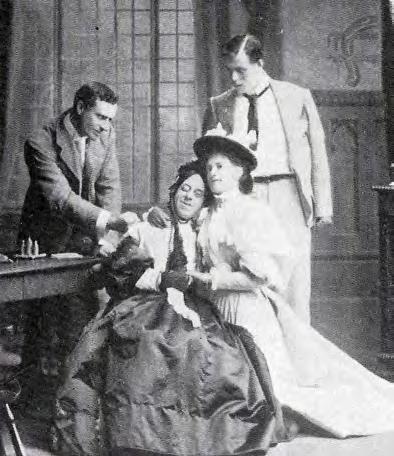
Child soldiers in the Congo: During the first and second civil conflicts in what is now the Democratic Republic of the Congo, both sides actively recruited and used child soldiers. It has been estimated that at least 30,000 children were fighting, making up 40% of some militias.
Clafouti: A French dessert made with eggs and, "traditionally," cherries, with a consistency like a flan in the middle and a cakelike texture towards the outside.
Darfur tragedy: The Darfur genocide has continued from 2003 until today, as the conflict in Western Sudan lacks resolution and violence continues. Hundreds of thousands of people from several ethnic groups have been killed, along with millions raped, tortured, assaulted, or displaced.
Ethiopian-Eritrean War: A war between Ethiopia and Eritrea that occurred from May 1998 to June 2000, although the border conflict continued for much longer. It is estimated between 70,000 and 300,000 people died during the war.
Foujita: Léonard Tsuguharu Foujita was a Japanese painter who was heavily involved in the Bohemian movement in Paris in the early 1900s and was friends with other artists such as Pablo Picasso and Henri Matisse. Foujita’s paintings often portray himself, women, and cats in a representational, but also fantastical style.

The Hague: The Netherlands’ seat of government and administrative center which also houses over 200 international governmental organizations such as the International Criminal Court, Europol, and the International Court of Justice.
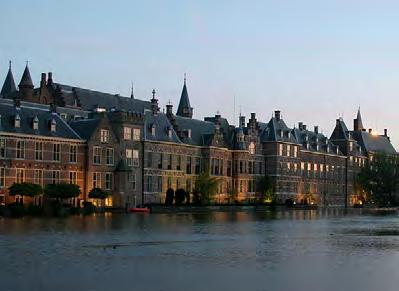
ICC (International Criminal Court): The ICC is an intergovernmental, international tribunal seated in The Hague. It is the only permanent international court with jurisdiction to prosecute on the international crimes of genocide, crimes against humanity, war crimes, and the crime of aggression.
Jane Fonda: Jane Fonda is an actress and activist whose career has spanned decades. She is best known not only for her work onscreen, but also for her activism and controversies offscreen.
John Wayne: The star of over 175 films and television shows, John Wayne was best known for his westerns and is considered one of the most prominent names in American cinema history.
Kalash (Kalashnikov): Kalashnikov is an automatic rifle called “Kalash” for short, first manufactured in the Soviet Union, but now popular and manufactured around the world.
Kinshasa: The capital of the Democratic Republic of the Congo.
Kokoschka (‘53 London exhibition): Oskar Kokoschka was an Austrian artist, poet, teacher, and playwright who was influential in the Expressionist art movement of the early-mid-1900s. He was known for his unique teaching style as well as his original art style, and his theories about art became central to what art scholars now characterize as Viennese Expressionism.
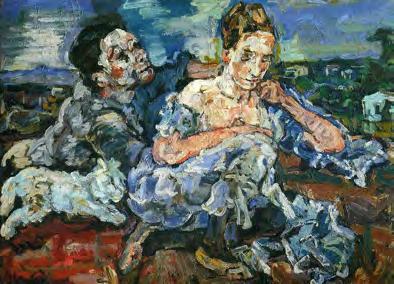
Kouros Cologne: Kouros is a cologne by Yves Saint Lauren introduced in 1981 that has an almost legendary reputation in the fragrance world.
Linzertorte: A traditional Austrian dessert consisting of a pastry crust topped with fruit preserves, nuts, and a lattice top.
The People of the Tundra: Peoples of the Tundra: Northern Siberians in the Post-Communist Transition is a 2002 anthropology book by John Peter Ziker.

Sheba: The name of a kingdom that features in the Quran and the Hebrew Bible. The location of the kingdom is debated.
Spartacus: A 1960 film starring Kirk Douglas as an enslaved person trained to be a gladiator in ancient Rome who leads an uprising.
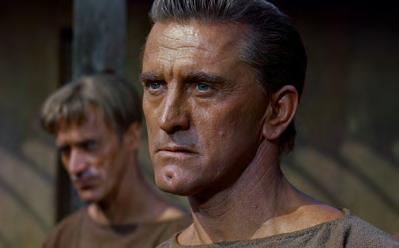
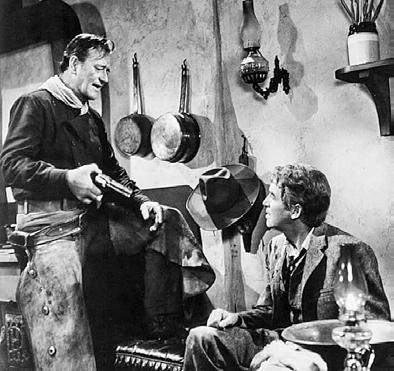
Shroud of Turin: A linen cloth bearing the image of a crucified person that many Christians believe is the burial shroud of Jesus Christ.

God of Carnage was originally written in French, but since premiering in 2006, it has had successful translations and productions in several other languages, including the English translation being presented here at Milwaukee Rep. Throughout theatrical history, the role of the translator has brought plays from all over the world to those who would otherwise not understand them in their original language. Without translators, some of the greatest works in the dramatic canon from Antigone to Waiting for Godot to A Doll's House would be inaccessible to English-speaking audiences.
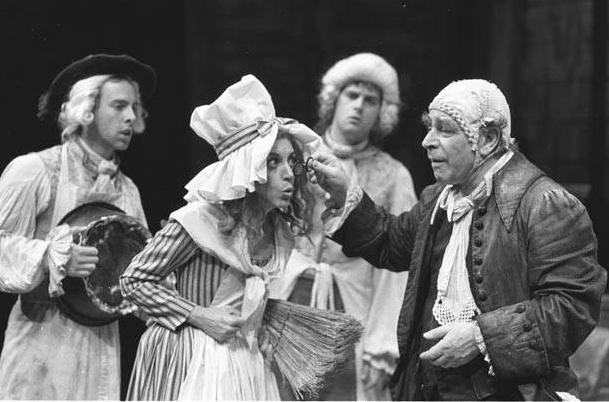
Often the work of the translator is the silent and forgotten role, as their job is to make the playwright’s story as transferable as possible to another language. But that is the art of it: being able to make ideas or expressions or syntax or meaning accessible for audiences who do not speak the original language of the play. In translating from one language to another, the translator must think about the special nuances of the origin language, of the playwright’s unique voice, and of how some things may not transfer as well to another language or culture. There are words or expressions that may exist in one language, but have no equivalent or direct translation in another; a skilled translator must figure out how to best convey these to the new script.
God of Carnage translator, Sir Christopher Hampton’s thoughts on the act of translating:

“What makes it fun to do is that it’s like doing a crossword puzzle or a maths conundrum.” – (L.A. Theatre Works interview)
“I think that in general translators perform an extremely valuable social task, which is that they explain one culture to another. And I’m often shocked when I read a novel in translation — you have to search for the name of the translator, which is in very small print, and you often find that the translator has been paid some small lump sum to do this really demanding, difficult work. It’s just as difficult as writing, in a certain way.”
– (L.A. Theatre Works interview)

“The translator is the person who is directly mediating the language to you and giving you access to all these worlds that you otherwise wouldn’t be able to enter.”
– (New York Times interview)

[On the difference between translation and writing one’s own plays]
“Well, if you write your own plays, it’s kind of a small number of huge decisions, and if you’re translating a play, it’s a huge number of small decisions. It’s like doing embroidery or a crossword or something. It’s finding the right word all the time—you kind of write faster when you’re writing for yourself. One is a very good complement to the other. They do each other good; working on other people’s texts is enriching for your own work.”
– (Backstage interview)

In God of Carnage the two couples in the play have differing parenting styles and gendered roles within their respective marriages. This contrast is clear from the very beginning of the play and is spotlighted at various points during the interactions and ensuing conflicts. The way the two couples relate to each other is different and Alan and Annette’s relationship very specifically highlights the gender gap in their parenting.
In heterosexual cisgender couples who are parents, this gap has been widely studied and analyzed by researchers and laypeople alike. (This article will focus mostly on this dynamic as most relevant to the relationships in the play.) While generalizations are never applicable to all couples or all relationships, the idea of a gender gap in parenting and perception is very much a part of our society. While many may hope that we are beyond these gaps, unfortunately the lived reality for many couples tells a much different story.
• Based on an analysis of 2019 data from 33 countries, representing 54% of the global working-age population, men's share of time spent in unpaid work as a proportion spent in total work was 19%, while for women this was 55%. This gap grew even more pronounced during the height of the pandemic as women took on the majority of care and educational assistance when children were staying at home.
• During the height of the pandemic, it was estimated that mothers who engaged in paid work increased their time spent caregiving by 346% compared to fathers.
• According to a Gallup study in early 2020, among millennials, gender had much more impact on division of household labor over earnings or paid work hours.
• 9 out of 10 women in committed par tnerships said they felt it was their sole responsibility to manage the family’s schedule.
• According to a United Nations report, women take on 3 of every 4 hours of unpaid labor at home or in the workplace.
• According to Oxfam, the unpaid care work per formed by women would amount to at least $10.8 trillion annually.
The term “weaponized incompetence” has gained popularity in recent years, highlighting the practice of someone feigning incompetence at doing a task in hopes that the other person will do it for them to “make it easier.” This term is often applied to men in heterosexual relationships; some recent viral examples include a very specific illustrated grocery list, a husband taking a nap while “watching the baby,” and countless others. We see this in the play multiple times, Alan being a prime example when he says, “You stay, Annette, you’ll tell me what you’ve decided, I’m no use whichever way you cut it. Women always think you need a man, you need a father, as if they’d be any help at all. Men are a dead weight, they’re clumsy and maladjusted . . .”
While this discrepancy is often related to very obvious domestic and caregiving tasks such as meal making, childcare, cleaning, and others, the idea of “invisible labor” is also often where inequality lies in these relationships. “Invisible” or “emotional” labor is all the minutiae, planning, and overseeing that keeps a household and family running, or according to the American Sociological Review: "anticipating needs, identifying options for filling them, making decisions, and monitoring progress." Some examples might include: keeping the family calendar, updating school records, scheduling regular health and wellness appointments, planning for holiday gifting, etc. Handling the “mental load” of a family takes a toll, and often falls on the mother.
The concept of parenting styles was first introduced by psychologist Diane Baumrind to explain the differing ways parents socialize and control their children. In the 1960s, Baumrind first identified three parenting styles, but later researchers added a fourth style to the mix. One caveat to this idea is that Baumrind developed this concept based on mostly white, middle class parents in the dominant American culture in the 1960s, not taking into account other cultural norms or practices.
According to researchers, there are four distinct parenting styles: authoritative, authoritarian, permissive, and uninvolved. These parenting styles are distinguished by two qualities:


Responsiveness: “the extent to which parents intentionally foster individuality, self-regulation, and self-assertion by being attuned, supportive, and acquiescent to children’s special needs and demands”
Demandingness: “the claims parents make on children to become integrated into the family whole, by their maturity demands, supervision, disciplinary efforts and willingness to confront the child who disobeys”
High responsiveness, high demandingness
• Sets clear rules and expectations for their kids while practicing flexibility and understanding
• Communicates frequently; they listen to and take into consideration their children’s thoughts, feelings and opinions
• Allows natural consequences to occur (e.g., kid fails quiz when they didn’t study), but uses those opportunities to help their kids reflect and learn
High responsiveness, low demandingness
• Communicates openly and usually lets their kids decide for themselves, rather than giving direction
• Rules and expectations are either not set or rarely enforced
• Typically goes through great lengths to keep their kids happy, sometimes at their own expense
Low responsiveness, high demandingness
• Enforces strict rules with little consideration of their kid’s feelings or social-emotional and behavioral needs
• Often says “because I said so” when their kid questions the reasons behind a rule or consequence

• Communication is mostly one-way — from parent to child
Low responsiveness, low demandingness

• Lets their kids mostly fend for themselves, perhaps because they are indifferent to their needs or are uninvolved/ over whelmed with other things
• Offers little nur turance, guidance, and attention



• Often struggles with their own self-esteem issues and has a hard time forming close relationships
In study after study of American children, having at least one parent who uses an authoritative style has led to stronger outcomes for children; children raised by authoritative parents are more likely to become independent, self-reliant, socially accepted, academically successful, and well-behaved. Direct causation is not exact, and becomes less clear when looking at parents in other countries. In almost all studies, regardless of locale or norms, children of neglectful parents have the worst outcomes.


The inciting incident in God of Carnage is a violent playground incident between Benjamin and Henry, the children of the couples who are the focus of the play. During the play, the fathers express with wistful nostalgia their boyhood days of “gangs” and scuffles with other boys, while the mothers are appalled by the violence. While the incident in the play is seen as a disagreement between friends that ended in injury, many children throughout the world experience much worse violence and bullying in their daily lives, especially in schools.
A 2018 study by UNICEF found that 50% of students ages 13-15 experienced violence at or around school, ranging from physical fights to bullying from peers. In addition, the report notes that students also experience other types of violence such as attacks on schools or classrooms and corporal punishment.
According to the American Academy of Child and Adolescent Psychology, a complex interaction of factors lead to an increased risk of violent behaviors among children. These factors include:
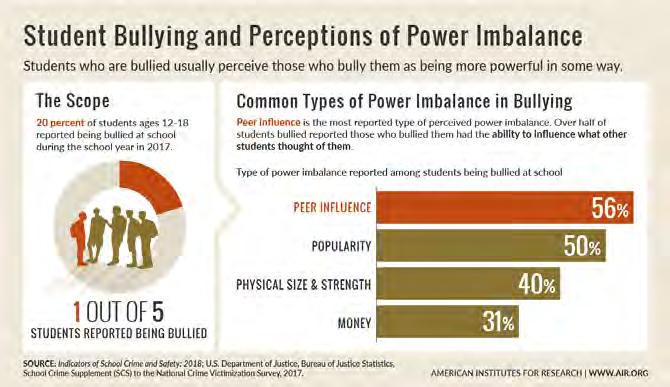
• Previous aggressive or violent behavior
• Being the victim of physical abuse and/or sexual abuse
• Exposure to violence in the home and/or community
• Being the victim of bullying
• Genetic (family heredit y) factors
• Exposure to violence in media (TV, movies, etc.)
• Use of drugs and/or alcohol
• Presence of firearms in home
• Combination of stressful family socioeconomic factors (poverty, severe deprivation, marital breakup, single parenting, unemployment, loss of support from extended family)

• Brain damage from head injury

Research has shown that much violent behavior can be decreased or prevented by reducing or eliminating the above factors.

“We have to have professionals out in our communities, visiting with families and visiting with children and doing the outreach and support. You know, it’s going to take families, parents, teachers, social workers— it’s going to take everyone to prevent fighting.”
Activist, former Madison school board member, and former law enforcement officer Gloria Reyes
In God of Carnage the two couples face conflict not only with the other couple, but with their own partners. Many plays and films have addressed various dynamics between and within couples.
Edward Albee’s masterpiece is considered to be the seminal play about couples and their dynamics. After a university faculty party, older couple Martha and George unravel their disintegrating and volatile relationship when a younger couple, Honey and Nick, are hosted as guests.

In this play by Milwaukee native and frequent collaborator of Milwaukee Rep, Ayad Akhtar, two couples meet for dinner and confront various aspects of their identities and beliefs. Not only does the play highlight the dynamics between the couples, but also the sociopolitical environment and hidden biases that come to light during their evening together.
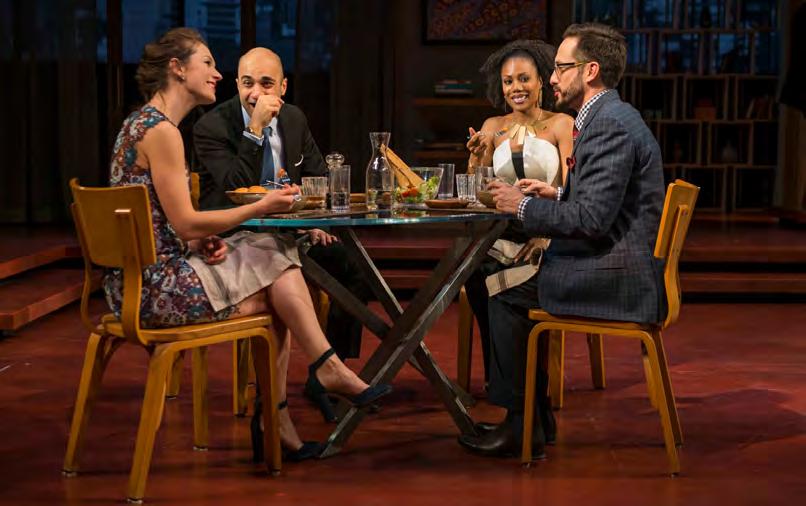
After a revelatory weekend at a retreat, Bob and Carol return home to share their new openness with their more conservative friends, Ted and Alice. As the play continues, Bob and Carol explore other sexual relationships amidst the judgment and eventual acceptance of their long-time friends.
In this play, two couples who have been friends for years, confront the meaning of marriage amidst the impending divorce of one of the pairs. The play follows not only the evening in which the breakup is revealed, but also the various moments during the twelve years prior since the divorcing couple was introduced to each other.

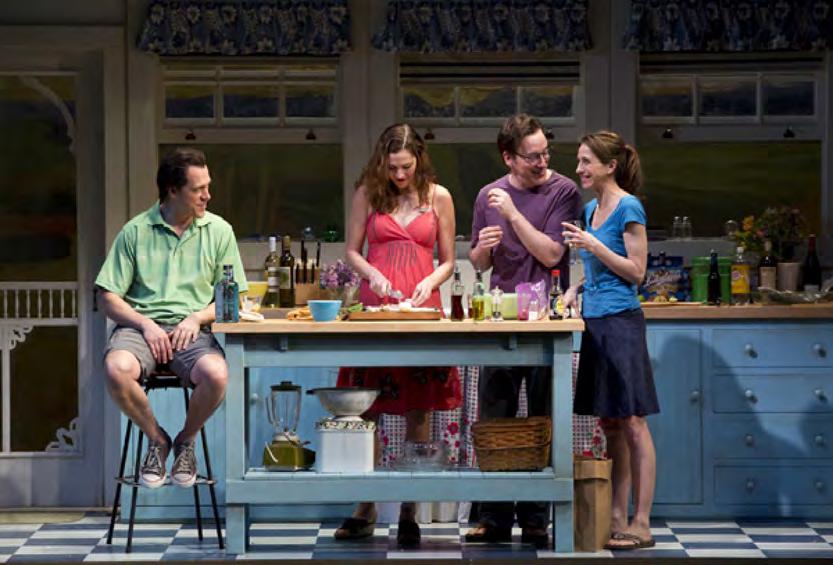
Milwaukee Repertory Theater is located in the Associated Bank Theater Center which is part of the Associated Bank River Center downtown at the corner of Wells and Water Streets. The building was formerly the home of the Electric Railway and Light Company.
The Ticket Office is visible on the left upon entering the Wells Street doors. The Quadracci Powerhouse is located on the Mezzanine and can be accessed via escalator or elevator.
Financial support enables The Rep to:
Advance the art of theater with productions that inspire individuals and create community dialogue.
✯ Advance the art of theater with productions that inspire individuals and create community dialogue;


✯ Provide a richer theater experience by hosting Rep-in-Depth, TalkBacks, and creating PlayGuides to better inform our audiences about our productions;
Provide a richer theater experience by hosting Rep-in-Depth, TalkBacks and creating PlayGuides to better inform our audiences about our productions.
Maintain our commitment to audiences with special needs through our Access Services that include American Sign Language interpreted productions, captioned theater, infrared listening systems and script synopses to ensure that theater at Milwaukee Rep is accessible to all.
✯ Educate over 21,000 students at 150+ schools in the greater Milwaukee area with Rep Immersion Day experiences, student matinees, workshops, tours and by making connections with their school curriculum through classroom programs such as Reading Residencies;
✯ Maintain our commitment to audiences with special needs through our Access Services that include American Sign Language interpreted productions, captioned theater, infrared listening systems and script synopses to ensure that theater at The Rep is accessible to all;
Educate over 20,000 students at 200+ schools in the greater Milwaukee area with Rep Immersion Day experiences, student matinees, workshops, tours and by making connections with their school curriculum through classroom programs such as Reading Residencies.
✯ Educate the next generation of theater professionals with our EPR Program which gives newly degreed artists a chance to hone their skills at The Rep as they begin to pursue their theatrical careers.
We value our supporters and partnerships and hope that you will help us to expand the ways Milwaukee Rep has a positive impact on theater and on our Milwaukee community.
Educate the next generation of theater professionals with our EPR Program which gives newly degreed artists a chance to hone their skills at Milwaukee Rep as they begin to pursue their theatrical careers. We value our supporters and partnerships and hope that you will help us to expand the ways Milwaukee Rep has a positive impact on theater and on our Milwaukee community.
4 1 4-290-5376
MILWAUKEE REP RECEIVES SUPPORT FROM: The Lynde and Harry Bradley Foundation
The Lynde and Harry Bradley Foundation
The Richard & Ethel Herzfeld Foundation
The Richard & Ethel Herzfeld Foundation
The Shubert Foundation